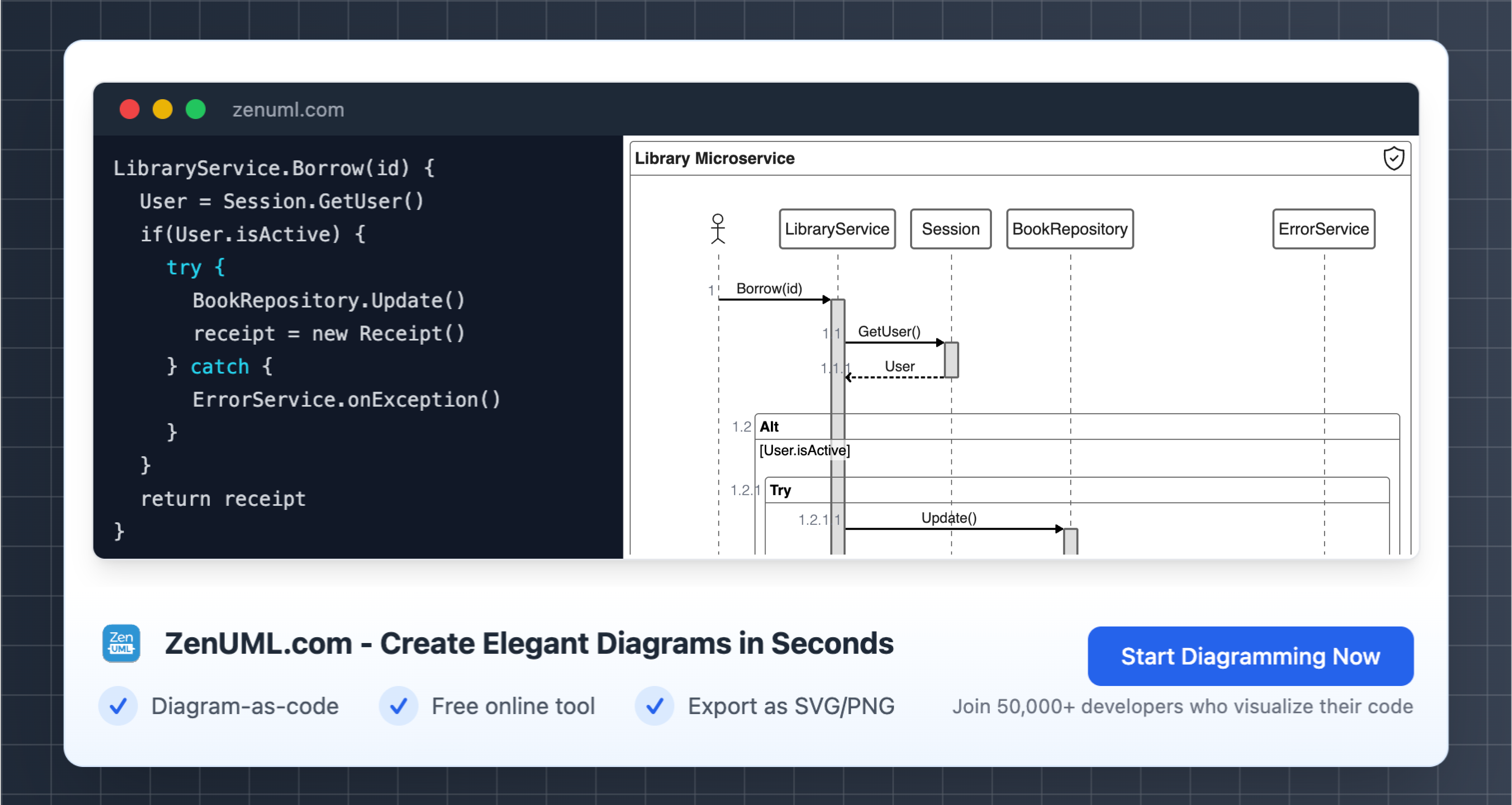Introduction
In the fast-paced world of software development, the ability to efficiently gather, prioritize, and manage feature requests is crucial for delivering products that meet the needs of your customers. This blog post will dive into the process of business process analysis, focusing on the key steps involved in collecting feature requests from stakeholders, prioritizing them based on value, and integrating them into the development backlog. By the end of this article, you'll have a comprehensive understanding of how to utilize sequence diagrams to model and optimize this critical business process.
Sequence Diagrams: The Key to Visualizing Business Processes
Sequence diagrams are a powerful tool in the business analysis toolkit, as they provide a clear and concise way to visualize the flow of information and interactions between different entities within a process. When it comes to feature request gathering and prioritization, sequence diagrams can help you understand the various stakeholders involved, the steps they take, and the decisions made at each stage.
Here's an example sequence diagram that illustrates the feature request gathering and prioritization process:

This sequence diagram depicts the key steps in the feature request gathering and prioritization process:
- The stakeholder submits a feature request to the product manager.
- The product manager evaluates the feature request, considering factors such as business value, technical feasibility, and alignment with the product roadmap.
- The product manager prioritizes the feature request and communicates it to the development team.
- The development team adds the feature request to the product backlog.
- The backlog is updated, and the product manager is informed of the status.
By visualizing the process in this way, you can identify potential bottlenecks, improve communication between stakeholders, and ensure that the feature request prioritization process is efficient and effective.
Business Process Analysis: The Foundation for Informed Decision-Making
Business process analysis is a crucial step in understanding and optimizing the feature request gathering and prioritization process. By analyzing the current process, you can identify areas for improvement, streamline workflows, and ensure that the right feature requests are being prioritized and delivered.
Here are the key steps involved in conducting a business process analysis for feature request gathering and prioritization:
-
Identify Stakeholders: Begin by identifying all the stakeholders involved in the feature request process, including customers, product managers, developers, and anyone else who may contribute to or be affected by the process.
-
Map the Current Process: Create a detailed map of the current feature request gathering and prioritization process, using tools like sequence diagrams to visualize the flow of information and decision-making.
-
Analyze Pain Points: Carefully examine the current process to identify any pain points or inefficiencies, such as delays in response times, unclear communication channels, or misalignment between stakeholder priorities.
-
Gather Feedback: Engage with the stakeholders involved in the process to gather their feedback and insights. This can help you understand their needs, challenges, and ideas for improvement.
-
Optimize the Process: Use the insights gathered from the previous steps to develop a plan for optimizing the feature request gathering and prioritization process. This may involve streamlining workflows, improving communication channels, or revising the criteria used for prioritization.
-
Implement and Monitor: Implement the optimized process and closely monitor its performance, making adjustments as needed to ensure that it continues to meet the needs of the business and its stakeholders.
By following this business process analysis approach, you can ensure that your feature request gathering and prioritization process is aligned with your business objectives and delivers the most value to your customers.
Key Factors for Effective Feature Request Prioritization
Once you have a clear understanding of the feature request gathering process, the next step is to focus on the prioritization of these requests. Effective prioritization is crucial for ensuring that the development team is focused on delivering the features that will have the greatest impact on your business and your customers.
Here are some key factors to consider when prioritizing feature requests:
-
Business Value: Assess the potential business value of each feature request, considering factors such as revenue impact, cost savings, and customer satisfaction.
-
Technical Feasibility: Evaluate the technical complexity and feasibility of implementing each feature request, taking into account the available resources and skills within the development team.
-
Alignment with Product Roadmap: Ensure that the feature requests align with the overall product roadmap and strategic objectives of the business.
-
Customer Impact: Analyze the potential impact of each feature request on your customer base, considering factors such as user satisfaction, usage patterns, and customer retention.
-
Ease of Implementation: Consider the effort and resources required to implement each feature request, prioritizing those that can be delivered quickly and with minimal disruption to the development process.
By weighting these factors and using a consistent prioritization framework, you can ensure that the development team is focused on delivering the features that will have the greatest impact on your business and your customers.
Integrating Feature Requests into the Development Backlog
Once the feature requests have been prioritized, the next step is to integrate them into the development backlog. The backlog is the master list of all the features, bugs, and other work that needs to be completed, and it is the foundation for the development team's planning and execution.
Here's an example of how the feature request prioritization process could be integrated into the development backlog:

In this example, the feature request is added to the backlog, and the product manager and development team work together to continuously review, estimate, and prioritize the backlog. This ongoing process ensures that the development team is always focused on the most important and valuable features, and that the backlog remains aligned with the business objectives.
By integrating the feature request gathering and prioritization process into the development backlog, you can ensure that the most important feature requests are being addressed, and that the development team is working on the right things at the right time.
Conclusion
In today's competitive software landscape, the ability to effectively gather, prioritize, and manage feature requests is a critical skill for product managers and business analysts. By using sequence diagrams to visualize the feature request gathering and prioritization process, and by conducting a thorough business process analysis, you can identify areas for improvement, streamline workflows, and ensure that the development team is focused on delivering the features that will have the greatest impact on your business and your customers.
Remember, the key to success in this process is to engage with your stakeholders, gather feedback, and continuously optimize the process to meet the evolving needs of your business. By doing so, you can build a feature-rich product that delights your customers and drives the growth of your organization.
We'd love to hear your thoughts and experiences with feature request gathering and prioritization. Feel free to leave a comment below and share your insights with the community.
Try ZenUML now!
Zenuml detailed feature roadmap available here.

